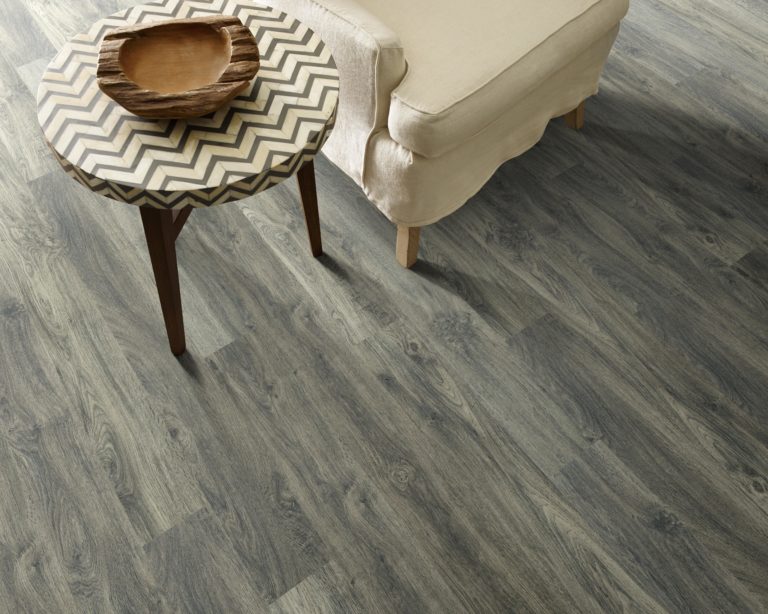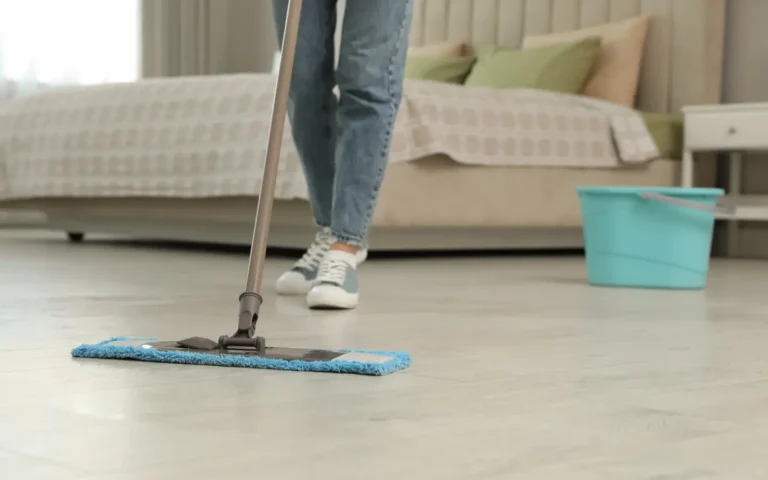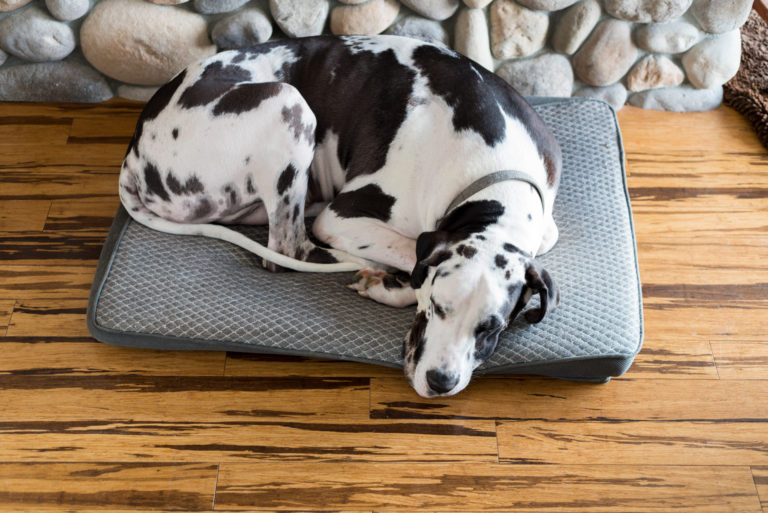This post may contain references or links to products from one or more partners of our parent company and/or subsidiaries of our parent company. For more information, visit this page.
November 4, 2020
Are you desperate for hardwood flooring, but also desperate to do right by Mother Earth? You’ve come to the right place!
These days, it’s more important than ever to make environmentally friendly choices when you shop. And that’s especially true when it comes to eco-friendly flooring.
That’s why below, we’re going to give you all the information you need to purchase sustainable wood flooring for your home.
We’re going to discuss the sustainable wood flooring certifications you should look for. We’re going to talk about the environmental impact of solid vs. engineered wood. And of course, we’re going to go through 11 of the most sustainable wood flooring options you can find (and a few you should avoid!)
First of All: What is Sustainable Wood Flooring?
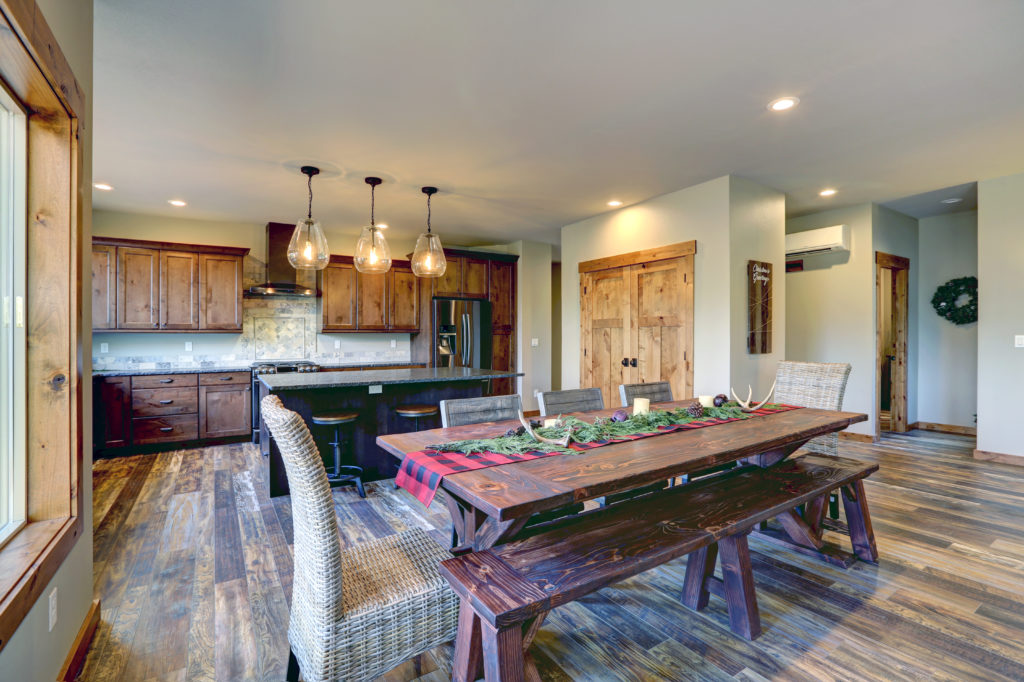
Before anything else, we have to answer the question “what does sustainable wood flooring even mean?” That way, we can describe exactly how each sustainable option below actually is.
And when it comes down to it, sustainability means something different to everybody. But we’re going by the definition laid out by the Food and Agricultural Organization of the United Nations (FAO), which basically says that sustainable wood flooring comes from forests that are managed, monitored, and protected to make sure that the trees can be regrown for generations to come.
Deforestation is a huge problem around the world. Only about 18% of forests are protected, according to the FAO’s 2020 report. By purchasing sustainable wood flooring, you’re helping to support renewable practices.
Best Brands of 2024
Sustainable Wood Flooring Certifications to Look For
So how can you make sure you’re purchasing sustainable wood flooring (and not something that’s harming the environment)?
Luckily, there are organizations and scientists that do the hard work for us—we just need to find their stamps of approval. Here are some of the main ones to look for.
Forest Stewardship Council (FSC-Certified Hardwood Flooring)
The Forest Stewardship Council is an international non-profit that makes sure logging and forest management is done in a way that’s responsible and beneficial.
In order to become an FSC-certified hardwood flooring source, wood suppliers must meet 10 principles and 57 different criteria—including wildlife protection and support of unionized workers. Translation: a Forest Stewardship Council certification is the gold standard when it comes to sustainable wood flooring products.
Sustainable Forestry Initiative (SFI-Certified Wood Flooring)
The Sustainable Forestry Initiative is another non-profit working hard to protect our resources. While SFI certification is a little less rigorous than FSC certification, it’s still important to look for. SFI certification ensures that your wood flooring isn’t coming from old-growth forests, for example.
When FSC-certified floors aren’t available, buying an SFI-certified product is still a great way to ensure you’re getting sustainable wood flooring.
American Tree Farm System (ATFS-Certified Wood Flooring)
You may also spot ATFS certifications while you’re looking at different wood flooring materials. The American Tree Farm System is another non-profit that works to certify sustainable forests. If you find flooring sourced from an ATFS-certified forest, you can rest assured that it’s sustainable wood flooring.
Other Eco-Friendly Flooring Labels
Just remember: there are many different labels used in the eco-friendly flooring space that don’t have anything to do with sustainability. It’s important to understand these terms and how they relate (if at all) to wood flooring’s sustainability.
Low-VOC Flooring or Non-Toxic Flooring
If you’ve been poking around the internet looking at different types of real and fake wood flooring, you’ve probably come across the terms “low-VOC” and “non-toxic”.
While these terms don’t relate much to sustainability, they’re extremely important to understand. That’s because certain types of flooring, like all industrially-made materials, can contain trace elements of dangerous chemicals, or Volatile Organic Compounds (VOCs).
Once a floor is installed in your home, these VOCs can be released into the air via a process called “off-gassing”. Making a point to purchase non-toxic laminate flooring, low-VOC vinyl flooring, or even low-VOC carpet can ensure that you’re getting a floor that’s safe for you and your family.
That being said buying low-VOC wood flooring is not necessarily the same as buying sustainable wood flooring, so be sure to do your research!
Which is More Sustainable: Engineered or Solid Hardwood Flooring?
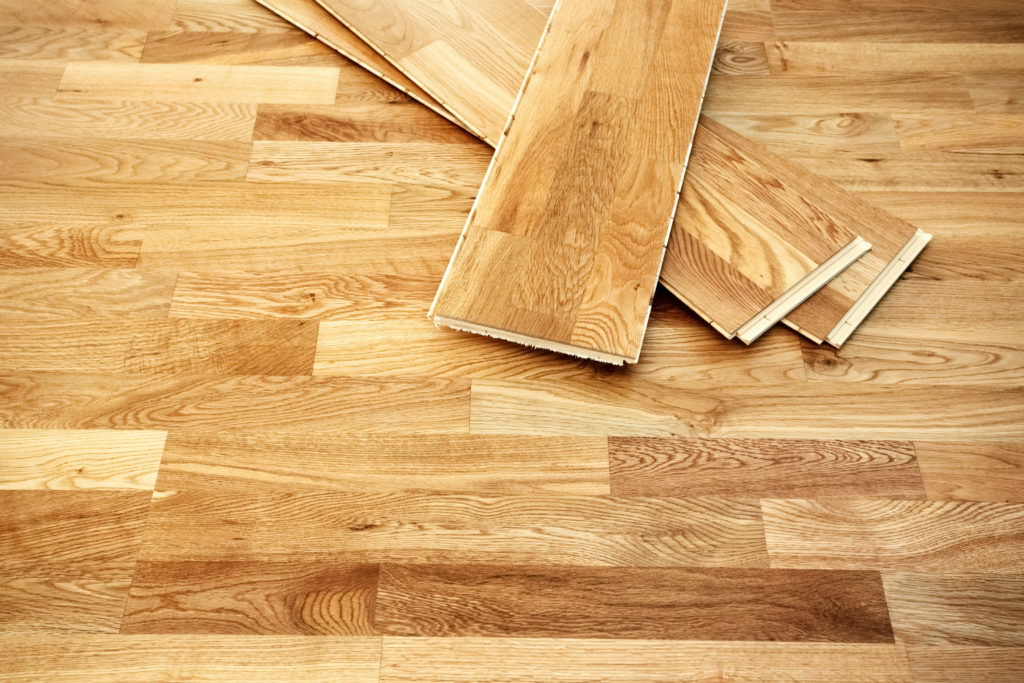
This is an interesting question, because there are several different answers.
If you don’t already know, solid hardwood flooring is exactly what it sounds like: one solid piece of wood. Engineered wood flooring, on the other hand, is composed of a plywood core with a veneer of solid wood on top. When the two are installed, it’s almost impossible to tell them apart.
Engineered products use faster-growing, more renewable plywood
Softwood trees almost always grow faster than hardwood trees. And plywood is usually made of softwood. From that point of view, engineered hardwood is the more sustainable wood flooring—since it uses plywood in its construction rather than being made entirely of hardwood.
Fun fact: that’s also why the cost to install engineered hardwood floors is lower when it comes to exotic wood. There’s less of the actual expensive, exotic wood being used!
But engineered wood can’t be refinished indefinitely
Unfortunately, there are some engineered wood disadvantages too. One of the biggest ones: it can’t be refinished over and over. In fact, even the best engineered wood flooring can only be refinished a few times at most.
Engineered wood can also contain adhesives
Adhesives are another factor to consider as far as sustainable flooring is concerned. Engineered wood is composed of multiple layers, meaning it contains adhesives (which glue these layers together). And adhesives are patient zero when it comes to VOCs. There’s an argument to be made that, because it contains adhesives, engineered wood is more difficult to repurpose and recycle.
But it can be installed without adhesives, nails, or staples
On the other hand, certain engineered floors can be installed as click-together flooring. These “floating floors” snap together and rest on top of subflooring rather than being glued, stapled, or nailed to it. And if you’re wondering what subflooring is, it’s just the rough surface below your finished floor.
This makes click-together surfaces some of the easiest types of flooring to install. And it gives engineered wood flooring a sustainable boost, since no metal or glue needs to be used in its installation—meaning it can be more easily recycled or repurposed at the end of its lifespan.
While there are advantages and disadvantages of floating floors, they generally fare better as far as sustainable wood flooring is concerned. And when it comes to hardwood floor alternatives, you’ll find that this installation method is relatively standard.
So which is the more sustainable wood flooring: engineered or solid wood?
Unfortunately, it depends. We know, we know—that’s not a straightforward answer! The bottom line, though, is that there are sustainability pros and cons to both types of flooring, as we’ve explained above. You have to balance each into your sustainability equation!
11 Excellent Sustainable Wood Flooring Options
Now that we know all about sustainable wood certifications and the differences in sustainability between engineered and solid wood, let’s talk about some of the most sustainable types of wood flooring you can choose from. Just remember: this list is going to be a mix of wood styles, wood species, and wood-like materials!
#1. Reclaimed Wood
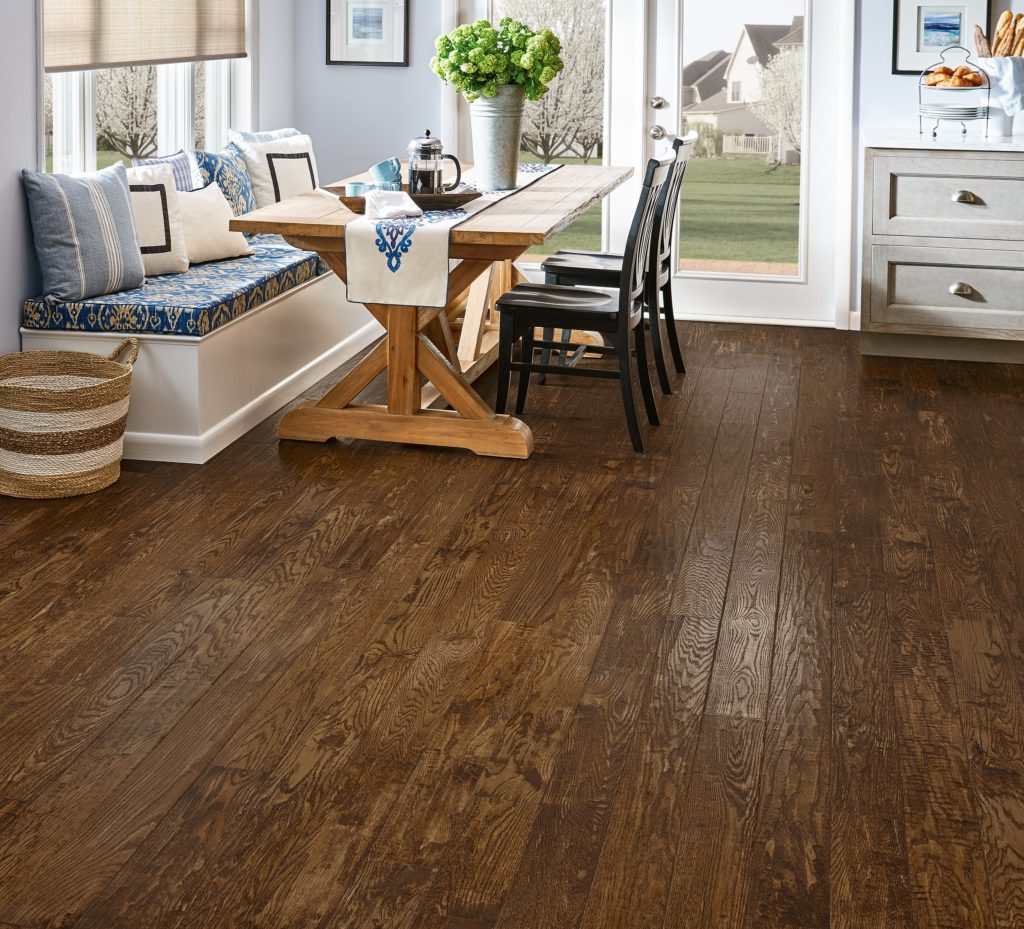
Reclaimed wood is your best option for sustainable wood flooring, hands down. And that’s because it’s 100% recycled! No trees are cut down when you buy reclaimed wood flooring.
Why? Reclaimed wood refers to wood that was previously used in construction. When old structures are torn down, any of the structurally sound materials can be repurposed. By selecting reclaimed wood, you’re making a choice to save wood from going to the landfill—and giving it new life in your home instead.
Because this wood has aged, it offers character that brand new hardwood can’t. In fact, some of the best hardwood floor brands actually sell reclaimed wood for this very purpose—it has a personality and history all its own!
#2. Salvaged Wood
Many people think salvaged wood is the same as reclaimed wood, but they’re actually quite different. Salvaged wood has never been used before in construction. It’s usually found at the back of a warehouse or an abandoned job site. By choosing salvaged wood you get the perks of new wood—but without having to cut down any trees. That’s what we call sustainable wood flooring!
Just remember: salvaged wood isn’t always the easiest to find, and you might not be able to find large quantities. Our advice? Check with a flooring store near you to see what they have. You can also search on Craigslist or call local salvage yards.
#3. Maple Wood Flooring
The maple tree is one of the most abundant hardwood trees in eastern North America. The more trees there are, the more sustainable the wood—so maple is a great option. There are hard and soft varieties of maple, so you’ll see it used in lumber, furniture, cabinets, stair railings, and more.
If you’ve been looking at clean and contemporary wood floor patterns, maple should definitely be on your list. Its fine grain gives it a uniform look, making it a popular choice in Scandanavian and mid-century-modern-inspired designs.
#4. Pine Flooring
Remember what we said earlier about softwoods growing faster than hardwoods? Pine flooring is a great example of this phenomenon. It’s a sustainable choice because it grows much faster than many hardwoods do.
Additionally, this can also make pine flooring a more affordable option. For instance, if you’re looking at the cost to replace carpet with hardwood, you’ll find that pine is one of the more cost-effective choices. Moreover, pine also takes stain quite well. Sustainable wood flooring that’s affordable and highly customizable? Win-win-win.
#5. Douglas Fir Flooring
Douglas fir flooring is another sustainable wood option. It’s a softwood species that grows in the Pacific Northwest, and it grows quickly. In fact, Douglas firs are sometimes used as Christmas trees because they’re so easily renewable! Another perk of this choice: Douglas fir offers longer-than-average plank lengths thanks to the incredible height these trees can quickly grow to.
#6. Black Cherry Flooring
Black cherry trees are the largest in the cherry family and are grown throughout the Appalachian region in FSC-certified forests. With their short lifespan, they are able to regrow quicker than a lot of other hardwood options.
When looking at different wood floor colors, you’ll notice that black cherry has a ton of character. Its natural pink and reddish hues are gorgeous as-is, but they darken and enrich when exposed to sunlight. Talk about interesting and sustainable wood flooring!
#7. Oak Flooring
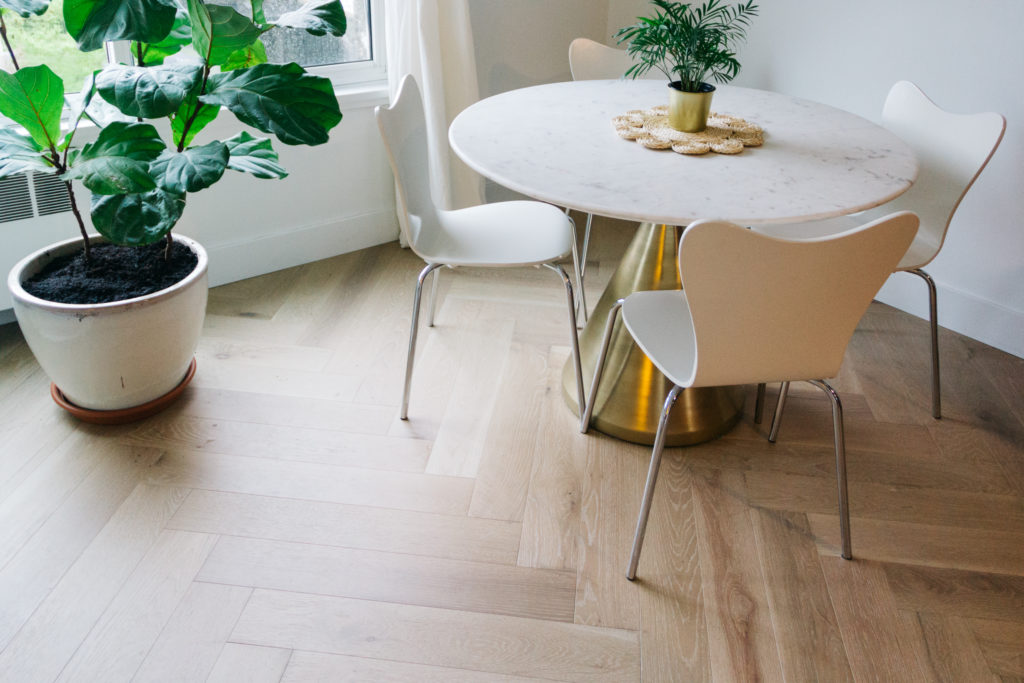
Oak is a popular North American species that grows in plenty of FSC-certified forests. Thanks to its abundance, oak is another sustainable wood flooring choice. And as you probably know, oak is one of the most popular types of wood flooring in the USA.
But oak isn’t just great in itself; it’s also a fantastic alternative for less-sustainable types of wood. For example, if you’ve looked into the pros and cons of hickory flooring, you’ll know that hickory isn’t the most renewable option in the world. And since hickory is relatively similar to oak in looks, hardness, and price, oak is often used as a hickory alternative.
When it comes to the disadvantages of hickory vs. oak flooring, oak is definitely the more sustainable wood flooring choice!
#8. Palm Flooring
Also known as coconut timber, palm wood is a great eco-friendly flooring option. It’s made from trees in coconut plantations that no longer produce fruit. Now, these trees are used to make flooring instead of being burned or dumped in a landfill. In that way, palm flooring is a little bit like reclaimed wood.
Palm flooring has a beautiful, rich color with a unique texture. It’s also very dense, so it’s a great option for areas with heavy foot traffic. Is that super important when you’re debating between carpet or hardwood in the bedroom? Not particularly. But if you’re trying to figure out what flooring to put in the hallway, it can make a huge difference as far as longevity (and therefore sustainability) is concerned.
#9. Cork Flooring
Cork is technically a wood by-product, but it blurs the line between real and fake wood flooring. Technically speaking, cork is made from tree bark. And that makes it a completely natural and easily replenishable material, since it’s harvested from the bark of living cork oak trees.
That’s right—they don’t even have to cut a tree down to produce cork. The same tree can be harvested every nine or ten years for up to two centuries. That’s crazy sustainable!
While there are some disadvantages of cork flooring, they’re relatively few and far between (and you can read up on the pros and cons of cork flooring for more info on that). Because when it comes down to it, cork is a sustainable wood flooring by-product that’s warm and soft underfoot—and it can even be installed just like those peel-and-stick carpet tiles DIYers love. What’s not to like?
#10. Bamboo Flooring
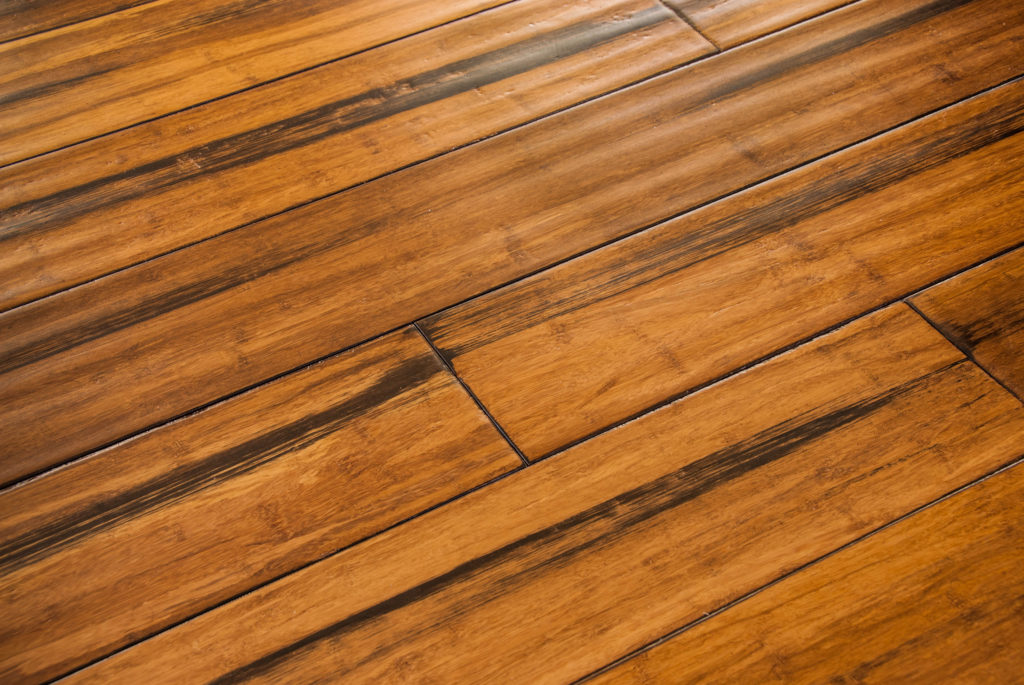
Bamboo is technically part of the grass family, but most people think of it as a type of wood flooring—so we will too!
What earns bamboo a spot in our sustainable wood flooring countdown? Well, as anyone who has battled bamboo in their yard knows, this stuff grows fast. And the faster it grows, the faster it regenerates—and the more sustainable it is!
Just remember: many communities and animals rely on bamboo forests, so make sure you only buy sustainably farmed bamboo flooring. You can learn all about that in this engineered bamboo flooring pros and cons article or by visiting the International Bamboo and Rattan Organisation website.
#11. Hemp Flooring
Hemp flooring is one of the newest and most eco-friendly flooring options on the market. It’s made by compressing hemp and soy-based resins into a product that’s just like engineered wood—but much stronger.
What makes hemp such a sustainable wood flooring alternative? Hemp grows over 100x faster than oak does; it absorbs four times more carbon from the air than trees do; it’s even biodegradable!
And hemp isn’t just sustainable; it’s one of the most scratch-resistant flooring options on the market. In fact, its extremely high Janka rating (2750) means it’s closer in terms of durability to laminates like RevWood and RevWood Plus than it is to softwoods.
What Types of Wood Flooring Should You Avoid?
When it comes to sustainability, not all wood products are created equal. The FSC urges you to avoid endangered or overharvested products like ebony flooring. And while teak flooring is great for wood floor bathrooms, you need to make sure you’re getting an ethically sourced product (or you could be contributing to deforestation and human rights abuses).
Additionally, while ash flooring might be one of the most durable wood flooring options around with a Janka rating that’s similar to oak’s, North American ash trees are currently dealing with an Emerald Ash Borer beetle infestation—so it’s more important now that you verify your product is coming from an FSC-certified forest.
What are Some Other Eco-Friendly Flooring Options?
If you want the look of wood flooring but aren’t set on any of the options we’ve discussed, worry not—there are a ton of sustainable wood flooring alternatives you can choose from! Concrete flooring that looks like wood is an excellent eco-friendly option. There are certain types of tile that look just like real wood. The same thing can be said for most of the best vinyl flooring options out there. The point is, you have options!
And Remember: Maintenance is Key!
Hardwood has an incredible lifespan, but it needs to be maintained correctly! In order for you to enjoy your sustainable wood product for decades, there are a few important steps you need to follow:
- Use furniture pads to protect your floor from scratches
- Sweep or dust often to keep particles from settling between floor boards
- Clean up spills immediately
- Use wood floor cleaner monthly
- Refinish your floors before they get damaged
Conclusion: Sustainable Wood Flooring is a Great Choice
Now that you know everything there is to know about sustainable wood flooring, it’s time to visit a flooring store near you to talk to the experts. But rest assured—you’re making a fantastic choice by prioritizing sustainability and eco-friendliness in your new wood floors!
And for more information on all things flooring, check out:
- Tile vs. Laminate: The Pros and the Cons
- Snap-Together Tile Flooring: Is It Right for You?
- Carpet vs. Laminate: The Pros and Cons
- Carpet or Hardwood in Bedrooms: Which is Better?
- The Best (and Worst) Types of Mudroom Flooring
- Water-Resistant Wood Flooring 101
- Pergo Extreme Reviews 2020: What Buyers are Saying
About The Author

Steph Gregerson
November 4, 2020
Steph is a book nerd, rule follower, and pizza lover who can't get enough of playing outside. She was raised on the ice rinks of MN and currently resides in sunny San Diego. As a freelance writer, she loves research, producing content, and organizing information for a wide variety of clients. She currently has at least 10 browser windows open at all times.

